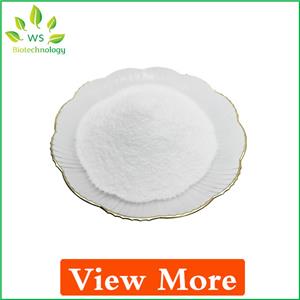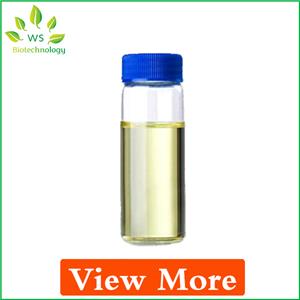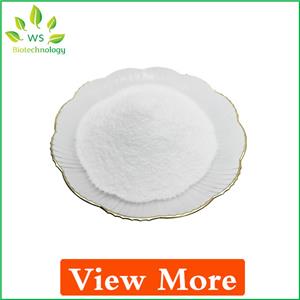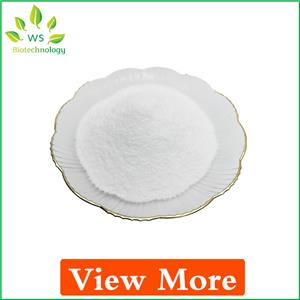
Lithocholic acid NEW
| Price | Get Latest Price | |
| Package | 1KG | 25KG |
| Min. Order: | 1KG |
| Supply Ability: | 100KG |
| Update Time: | 2025-10-24 |
| Related documents: | COA |
Product Details
| Product Name: Lithocholic acid | CAS No.: 434-13-9 |
| Min. Order: 1KG | Purity: 98% |
| Supply Ability: 100KG | Release date: 2025/10/24 |
Of course. Lithocholic acid (LCA) is a secondary bile acid primarily known for its toxicity, but it has garnered significant research interest for its potential applications in medicine and biology.
Its applications can be divided into two main categories: **1) Its established physiological role and effects, and 2) Its potential therapeutic applications.**
1. Established Physiological Role and Effects
Lithocholic acid is not something the body uses by choice; it's a byproduct of metabolism with generally negative effects.
Origin: It is formed in the intestines by gut bacteria (e.g., Clostridium species) that metabolize chenodeoxycholic acid** (a primary bile acid).
Toxicity and Elimination: LCA is highly hydrophobic and cytotoxic. It is poorly absorbed in the colon and is mostly excreted in feces. The liver detoxifies the small amount that is absorbed by conjugating it with sulfate or glycine/taurine, making it more water-soluble for excretion.
Pathological Effects:
Cholestasis: High levels of LCA can impair bile flow, leading to liver damage.
Carcinogenicity: It is considered a DNA-damaging agent and a potential contributor to colon cancer when present in high concentrations over long periods.
2. Potential and Research-Based Therapeutic Applications
Despite its toxicity, research has uncovered surprising potential benefits when LCA is used in controlled, specific contexts.
a) Anti-Cancer Agent
This is one of the most promising areas of research. LCA can selectively induce cell death (apoptosis) in certain cancer cells.
Target Cancers: Studies have shown efficacy in models of neuroblastoma, prostate cancer, breast cancer, and **glioblastoma**.
Mechanism: It appears to work through multiple pathways, including generating reactive oxygen species (ROS), disrupting mitochondrial function, and activating specific death receptors on cancer cells. Its toxicity to mammalian cells is precisely what makes it interesting as a chemotherapeutic agent.
b) Anti-Microbial and Anti-Parasitic Agent
Gut Microbiome Modulation: As a natural byproduct of bacterial metabolism, LCA can inhibit the growth of certain other bacteria, helping to shape the composition of the gut microbiome.
Against Clostridium difficile: Some research suggests it may help protect against infections by C. diff, a harmful bacterium that causes severe diarrhea, by inhibiting its growth.
Anti-Malarial: Interestingly, LCA and its derivatives have shown potent activity against the malaria parasite *Plasmodium falciparum*, even against drug-resistant strains.
c) Metabolic Regulator and TGR5 Receptor Agonist
LCA is a natural agonist for two important receptors:
TGR5 (Gpbar1): This receptor is involved in regulating energy expenditure, glucose metabolism, and insulin sensitivity. Activating TGR5 can increase energy expenditure, making it a potential target for **treating obesity and diabetes**.
Pregnane X Receptor (PXR): Activation of PXR can have anti-inflammatory effects, particularly in the colon, and plays a role in detoxification pathways. This suggests a potential role in managing **inflammatory bowel diseases (IBD) like colitis**.
d) Longevity and Healthspan
Mitochondrial Stress Response: In studies on simple model organisms like nematodes (C. elegans), low doses of LCA have been shown to extend lifespan. The proposed mechanism is that its mild toxicity **induces a stress response** in mitochondria (the cell's power plants). This process, called **mitohormesis**, strengthens the cells and makes them more resilient to future stress, potentially slowing aging.
e) Drug Delivery Enhancer
Permeation Enhancer: Due to its surfactant-like properties (it can disrupt lipid membranes), chemically modified derivatives of LCA are being investigated to improve the absorption of poorly absorbed drugs, especially peptide drugs like insulin, through biological barriers like the intestinal wall or the skin.
Company Profile Introduction
You may like
Recommended supplier
| Product name | Price | Suppliers | Update time | |
|---|---|---|---|---|
| $29.00/1mL |
VIP6Y
|
TargetMol Chemicals Inc.
|
2025-10-24 | |
| $0.00/1kg |
VIP1Y
|
HANGZHOU HAILAN CHEMICAL CO.,LTD.
|
2025-09-08 | |
| $0.00/1KG |
VIP2Y
|
Shaanxi Xianhe Biotech Co., Ltd
|
2025-04-18 | |
| $6.00/1kg |
HebeiShuoshengImportandExportco.,Ltd
|
2024-08-09 | ||
| $5.00/1KG |
Hebei Longbang Technology Co., Ltd
|
2024-05-13 | ||
| $6.00/1KG |
Hebei Saisier Technology Co., LTD
|
2024-04-03 | ||
| $0.00/1kg |
Hebei Jingbo New Material Technology Co., Ltd
|
2024-01-05 | ||
| $120.00/1kg |
Wuhan Quanjinci New Material Co.,Ltd.
|
2023-11-09 | ||
| $0.00/1KG |
VIP4Y
|
Xinyi Dajiang Chemical Co.,Ltd.
|
2022-05-25 | |
| $15.00/1KG |
Zhuozhou Wenxi import and Export Co., Ltd
|
2021-07-10 |
- Since: 2018-09-28
- Address: No. 16, 20th Floor, Unit 2, Kaixin Houhu Life Plaza, Tazi Lake, Jiang'an District, Wuhan City, Hubei








 China
China